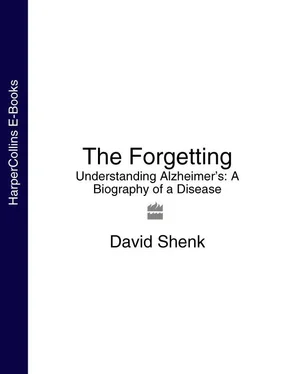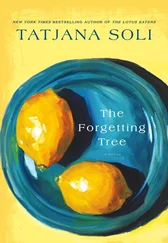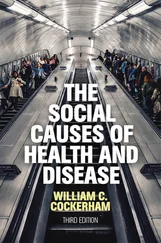Dr. Alzheimer’s assistants prepared for microscopic examination more than 250 slides from slivers of the outer lining (the meninges) of Frau D.’s brain; from the large cerebral vessels; from the frontal, parietal, and occipital areas of the cerebral cortex (locus of conscious thought); from the cerebellum (regulator of balance, coordination, gait) and the brainstem (breathing and other basic life functions); and from the spinal cord, all chemically preserved in a cocktail of 90 percent alcohol/10 percent formalin, and stained according to a half-dozen recipes of Alzheimer’s contemporaries.
Having fixed, frozen, sliced, stained, and pressed the tissue between two thin pieces of glass, Alzheimer put down his cigar and removed his pince-nez, leaned into his state-of-the-art Zeiss microscope, and peered downward. Then, at a magnification of several hundred times, he finally saw her disease.
It looked like measles, or chicken pox, of the brain. The cortex was speckled with crusty brown clumps—plaques—too many to count. They varied in size, shape, and texture and seemed to be a hodgepodge of granules and short, crooked threads, as if they were sticky magnets for microscopic trash.
The plaques were nestled in amongst the neurons, in a space normally occupied by supporting tissue known as glial cells. They were so prominent that Alzheimer could see them without any stain at all, but they showed up best in a blend of magenta red, indigo carmine, and picric acid. Alzheimer had squinted at thousands of brain slides, but he found these clumps “peculiar” and had no idea what they could be.
A different stain, invented just four years earlier, revealed the other strange invasion of Auguste D.’s brain. In the second and third layers of the cortex, nearly a third of the neurons had been obliterated internally, overrun with what Alzheimer called “a tangled bundle of fibrils”—weedy, menacing strands of rope bundled densely together.
The tangles were just as foreign to Alzheimer as the plaques, but at least the ingredients looked familiar. They seemed to be composed of fibrils, an ordinary component of every neuron. It was as if these mild-mannered, or “Jekyll,” fibrils had swallowed some sort of steroidal toxin and been transformed into “Hyde” fibrils, growing well out of proportion and destroying everything within their reach. Many affected neurons were missing a nucleus completely, and most of the rest of their cell contents. A good portion of the neurons in the upper cell layers of the cortex had disappeared. They just weren’t there. Alzheimer’s assistant Gaetano Perusini wrote of the neurofibrillary tangles in Frau D.’s brain:
It is impossible to give a description of all the possible pictures: there are present all the variable and twisted formations that one can imagine; at times large fibrils seem to lie only on the periphery of the cell. But on focusing untangled fibrillar agglomerations are found. Changing the focus again one has the impression that the single dark-coloured fibrils unwind into an infinite number of thinner fibrils … arranged as balls of twine or half-moons or baskets.
Connecting a camera lucida to the top of the microscope, Alzheimer and Perusini both drew pictures of the tangles.
The menacing drawings perfectly convey the ghastly significance of their discovery. Here was the evidence that Auguste D. had not lost herself. Rather, her “self” was taken from her. Cell by cell by cell, she had been strangled by unwelcome, malignant intruders.
What were they, exactly, and where did they come from?
When my kids began to say they were worrying about my memory, I said to them, “Well, I’ve never had a photographic memory, and I have a lot more on my mind now. There’s a lot more to remember with life being so complex. How can I remember everything? What do you want—total recall?” I always had an answer. I really was in denial, and it just didn’t occur to me that I had a problem. But I also knew that they weren’t totally exaggerating .
—D.
New York, New York
Queens, New York: August 1998
It was lunch time in Freund House, in the village of Flushing. A small group of elderly Jews sat quietly at a round table. Not much was said as they ruffled open their brown paper bags and popped the lids off drinks. Someone brought in a big bottle of ginger ale and some plastic cups, and offered to pour.
Irving looked over at Greta and noticed that she was sitting still, her hands folded together on the bright red table cloth.
“Did you bring your lunch today, Greta?”
“I don’t think so. I usually don’t bring my lunch here.”
“Yes, you do. You bring cereal.”
Irving waited for Greta to recollect her routine, but she could not. An elegant, shrunken woman with short cropped hair, dark eyebrows, and a supple, leathery face, Greta did not look even remotely like someone in decline. Her eyes still sparkled and her voice had spunk. She spoke without hesitation and in full, clear sentences. There was no clue from her cadences that her brain was under attack.
Paying close attention, though, one could tell that something was not right. For example, in a conversation about Japan, Greta very clearly explained that she had been there a number of times. She discussed the temples of Kyoto, which she enjoyed, and the food, which she did not.
Then, about an hour later, the subject of Japan came up again. This time, she said matter-of-factly, “Japan—never did get there. Couldn’t get in.”
These hiccups in logic were typical, I now recognized, of someone beginning to advance past the very earliest stages of the disease. She wasn’t very far along yet, and most of her brain was still working quite well; but her symptoms were no longer strictly limited to the classic short-term memory loss that usually signals the disease’s onset. Occasionally, now, a queer incongruity would creep in.
Standing off to one side of the table was Judy Joseph, the co-leader, with Irving Brickman, of this support group. About a year earlier she had been introduced to Irving in the New York offices of the Alzheimer’s Association, where each had come to see what, if anything, could be done about this ominous new social phenomenon. Suddenly, it seemed, Alzheimer’s disease was everywhere. Nursing home dementia units were filling beyond capacity. Middle-aged children were moving back home to take care of their parents. Community police were regularly being phoned to help track down wandering relatives. The disease was cropping up continually in newspaper articles and everyday conversation. Perhaps most tellingly, a vibrant Alzheimer’s consumer market was springing up—products like automatic medication dispensers (no memory required!), wireless tracking devices for wanderers, and even a Stovetop fire extinguisher designed explicitly for people who might forget to turn off the range.
All of a sudden, everyone seemed to know someone touched by Alzheimer’s. Partly, this was due to a shift in public conception of senile dementia. Only in the mid-1970s had doctors started to realize that senility is not an inevitable process of brain aging and decay but a recognizable—and perhaps one day treatable—disorder. Gradually, this perception also started to seep into the general consciousness: Senility is a disease .
Since then, there had been a staggering rise in actual cases of Alzheimer’s, corresponding to a vast increase in the elderly population. People were now living much longer lives. Longer lives meant more cases of Alzheimer’s. Since 1975, the estimated number of Alzheimer’s cases in the U.S. had grown tenfold, from 500,000 to nearly 5 million. Worldwide, the total was probably about three times that figure. In the absence of a medical breakthrough, the gloomy trend would not only continue, but would also get much, much worse.
Читать дальше












